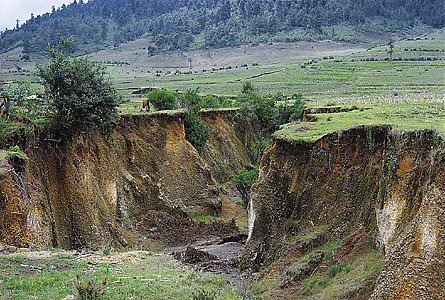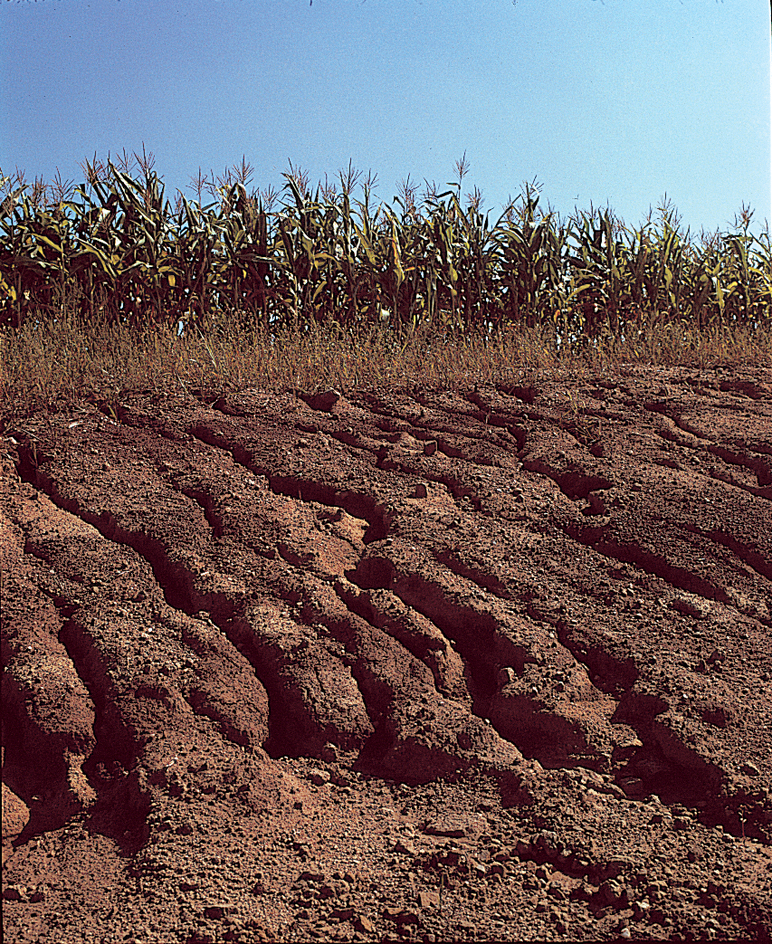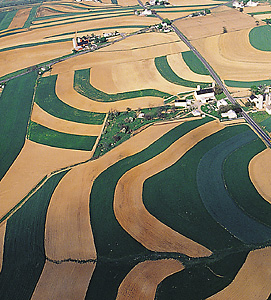Erosion << ih ROH zhuhn >> is a natural process by which rock and soil are broken loose from Earth’s surface at one location and moved to another. Erosion changes land by wearing down mountains, filling in valleys, and making rivers appear and disappear. It is usually a slow and gradual process that occurs over thousands or millions of years. But erosion can be speeded up by such human activities as farming and mining.
How erosion occurs.
Erosion begins with a process called weathering. In this process, environmental factors break rock and soil into smaller pieces and loosen them from Earth’s surface. A chief cause is the formation of ice. As water freezes, it expands with great force. As a result, when it freezes inside the crack of a rock, it can break the rock apart. Other major agents of weathering include chemicals; living organisms; the movement of air, ice, and water; and heat from the sun.

After materials have been loosened by weathering, they are moved to new locations. For example, winds lift particles from Earth’s surface and can carry them over great distances. Glaciers transport materials embedded in them. Raindrops that splash against sloping land move soil particles downhill. Water currents carry materials down a riverbed or out to sea.
Effects of erosion.
Erosion can be both helpful and harmful. It benefits people by contributing to the formation of soil through the breaking up of rock. It causes rich soil to be deposited on valley floors and at the mouths of rivers. Erosion also has produced some of the world’s most spectacular geological formations. The Grand Canyon, for instance, has been created over the course of millions of years by erosion from the Colorado River. See Grand Canyon.

One of the most harmful effects of erosion is that it robs farmland of productive topsoil. For this reason, it is one of the leading threats to the food supply. Erosion can also wash valuable fertilizers from farmland and carry pollution-causing agricultural chemicals into lakes and rivers. Eroded soil can clog irrigation ditches, ponds, and reservoirs. Gullies caused by flowing water may ruin fields by making them too small to farm with tractors and other modern equipment.
Controlling erosion.
Although erosion is a natural process, people can influence the extent to which it occurs. Soil erosion increases, for example, when land is cleared and cultivated, because trees and other plants shield soil from wind and rain. Plant roots and the remains of dead plants also help hold soil in place. Farmers can thus reduce erosion by keeping idle fields planted with such thickly growing cover crops as alfalfa or grass. Many farmers also decrease erosion through the use of no-till and conservation tillage techniques, in which remains of the previous crop are left on the soil surface. Other conservation methods include contour plowing, strip cropping, and terracing. See Conservation (Soil conservation).

